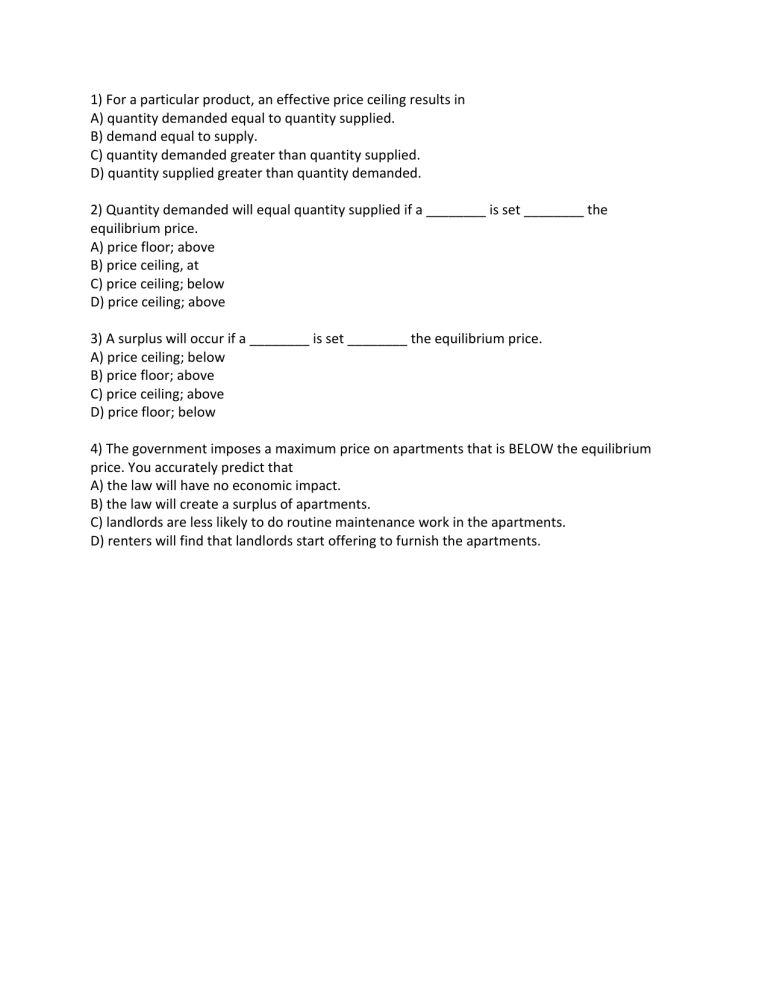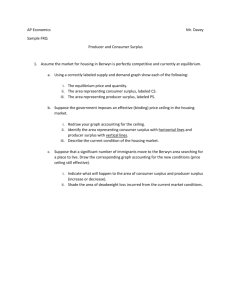
1) For a particular product, an effective price ceiling results in A) quantity demanded equal to quantity supplied. B) demand equal to supply. C) quantity demanded greater than quantity supplied. D) quantity supplied greater than quantity demanded. 2) Quantity demanded will equal quantity supplied if a ________ is set ________ the equilibrium price. A) price floor; above B) price ceiling, at C) price ceiling; below D) price ceiling; above 3) A surplus will occur if a ________ is set ________ the equilibrium price. A) price ceiling; below B) price floor; above C) price ceiling; above D) price floor; below 4) The government imposes a maximum price on apartments that is BELOW the equilibrium price. You accurately predict that A) the law will have no economic impact. B) the law will create a surplus of apartments. C) landlords are less likely to do routine maintenance work in the apartments. D) renters will find that landlords start offering to furnish the apartments. 5) In figure 4.6, the area of [A + B + C] represents A) consumer surplus plus producer surplus. B) consumer surplus. C) producer surplus. D) consumer surplus minus producer surplus. 6) In figure 4.6, the area of [E + F + G] represents A) consumer surplus. B) consumer surplus minus producer surplus. C) consumer surplus plus producer surplus. D) producer surplus. 7) In figure 4.6, consumer surplus is area [A + B + E] if price is A) P1. B) P2. C) P3. D) above P3. 8) In figure 4.6, producer surplus is area G if price is A) below P1. B) P1. C) P2. D) P3. 9) In figure 4.6, the deadweight loss due to under production is area [C + F] if price is A) P1. B) P2. C) P3. D) > P3. 10) In figure 4.6, producer surplus changes by the area [E + F] if price goes from equilibrium to A) P1. B) P3. C) < P1. D) > P3. 11) In figure 4.6, consumer surplus changes by the area [E - C] if price goes from equilibrium to A) P1. B) P3. C) < P1. D) > P3.





